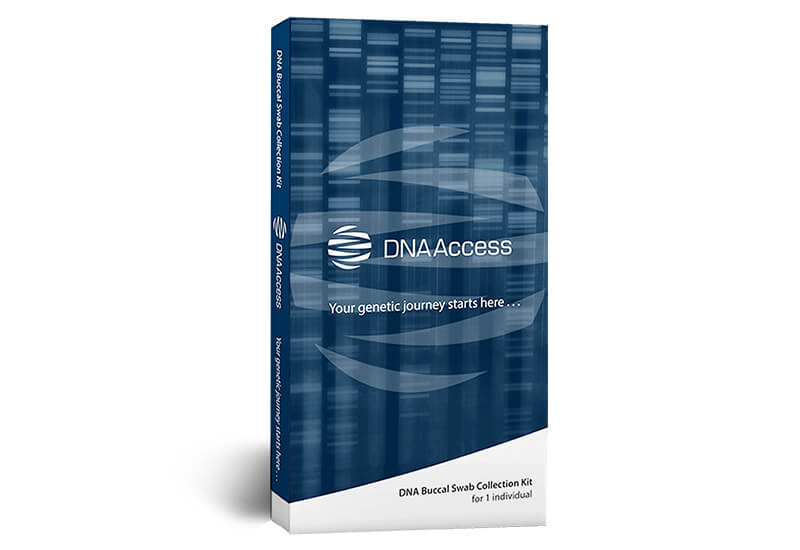Celiac Disease DNA Test
$249.00
Genetic changes in two genes, HLA-DQA1 and HLA-DQB1, are by far the best predictors of CD predisposition. Inheriting one or more of the CD-associated alleles (HLA-DQA1*05, HLA-DQB1*02, HLA-DQB1*0302) increases your risk of developing celiac disease. An absence of these CD-associated alleles can essentially exclude a CD diagnosis.
Description
What is Celiac Disease?
Celiac disease is an autoimmune disorder in response to the digestion of gluten. Gluten is a protein found in wheat, barley, rye and other grains and is commonly included in many processed and packaged foods. When an affected individual consumes gluten, the gliadin fraction is recognized by the immune system as a foreign substance. This initiates a cascade of events in the immune system, causing severe inflammation and damage to the intestinal lining. The intestinal damage interferes with the normal absorption of nutrients, vitamins and minerals, leading to malnutrition and other health issues.
TURNAROUND TIME
SAMPLE TYPE
AGE REQUIREMENT
GENDER
Test Details
Genetics of Celiac Disease
Celiac disease is strongly associated with specific types or alleles of HLA-DQA1 and HLA-DQB1. These two genes encode two human leukocyte antigens, which are important components of the human immune system. The celiac-associated alleles are HLA-DQA1*05, HLA-DQB1*02 and HLA-DQB1*0302. Individuals that have one or more of these alleles have an increased risk of developing celiac disease. However, this is not a diagnostic test, as only a subset of people with these alleles will develop celiac disease. If these alleles are absent, the diagnosis of celiac disease can essentially be excluded, as there is a less than 0.04% chance of developing celiac disease in people that don’t have one or more of these at-risk alleles.
Signs and Symptoms of Celiac Disease
The symptoms of celiac disease differ between individuals, with some people only showing minimal symptoms that can easily go undiagnosed, while others are severely affected. Regardless of the extent of the symptoms, the damage to the intestinal lining still occurs in celiac-affected people. The gastrointestinal symptoms of celiac disease are the symptoms that are most commonly associated with this disease. Common symptoms include embarrassing flatulence, uncomfortable bloating, appetite changes, nausea, vomiting, constipation and diarrhea. An excessive weight loss may occur, as the body is unable to absorb nutrients (including fats). Or sometimes people gain weight, due to overeating to compensate for the lack of nutrient absorption. The serious damage that occurs in the intestine of affected people can also lead to other food sensitivities, including lactose intolerance.
If celiac-affected people are not diagnosed and continue to consume gluten, serious damage occurs in the intestine, preventing the absorption of nutrients and leads to further non-gastrointestinal symptoms. Sometimes these non-gastrointestinal symptoms can occur in the absence of the gastrointestinal symptoms detailed above, which can further complicate an accurate diagnosis. Fatigue is a common symptom often combined with painful migraines, irritability, depression and anxiety. Musculoskeletal problems (e.g. muscle cramps and joint pain) and skin rashes, known as dermatitis herpetiformis, affect some people. The poor absorption of nutrients can also lead to serious vitamin deficiencies, low iron levels (anemia) and low blood sugar (hypoglycaemia). Other symptoms of celiac disease can include nosebleeds, hair loss, seizures, mouth ulcers, dental enamel defects, missed menstrual periods and a tingling in the legs or feet due to low calcium and nerve damage. When celiac disease occurs in children, the poor absorption of nutrients can also lead to attention deficit disorder, decreased growth and development and delayed puberty.
Osteoporosis is a common complication due to the decreased ability to absorb nutrients such as calcium. Celiac disease can also lead to infertility and miscarriages or birth defects due to the poor absorption of folic acid. Other autoimmune disorders (e.g. diabetes, lupus and rheumatoid arthritis) and other organ damage (e.g. kidney, liver and heart problems) have been linked to celiac disease.
How is Celiac Disease inherited?
The HLA genes are located on an autosome (chromosome 6). Autosomes are inherited in pairs – one from each parent; hence people carry two copies of each HLA gene. Inheriting one or more of the celiac-associated alleles (HLA-DQA1*05, HLA-DQB1*02, HLA-DQB1*0302) increases the risk of developing celiac disease. If an individual inherits both a celiac-associated HLA-DQA1 and a celiac-associated HLA-DQB1 allele, one or more of the celiac-associated heterodimers (DQ2 and DQ8) can form. It is these heterodimers that detect gluten and initiate the abberant immune response.
DNA testing for Celiac Disease
A simple DNA sequencing test can be completed to determine which alleles of HLA-DQA1 and HLA-DQB1 an individual has inherited. This sequencing reaction detects nucleotide changes that occur in the three celiac-associated alleles (HLA-DQA1*05, HLA-DQB1*02, HLA-DQB1*0302). The presence or absence of these celiac-associated alleles gives an indication of the risk of gluten sensitivity and celiac disease (see table below). If none of these celiac-associated alleles are present, the risk of celiac disease is extremely low.
| Celiac-associated alleles present | Celiac-associated heterodimers | Celiac risk |
| DQA1*05 + DQB1*02 + DQA1*03 + DQB1*0302 | DQ2 DQ8 | 1:7 |
| DQA1*05 + DQB1*2 + DQB1*02 | DQ2 | 1:10 |
| DQA1*05 + DQB1*02 + DQA1*05 + DQB1*02 | DQ2 DQ2 | 1:10 |
| DQA1*03 + DQB1*0302 + DQA1*03 + DQB1*0302 | DQ8 DQ8 | 1:12 |
| DQA1*03 + DQB1*0302 + DQB1*02 | DQ8 | 1:24 |
| DQB1*02 + DQB1*02 (homozygous) | 1:26 | |
| DQA1*05 + DQB1*02 | DQ2 | 1:35 |
| DQA1*03 + DQB1*0302 | DQ8 | 1:89 |
| DQB1*02 (heterozygous) | 1:210 | |
| DQB1*02 (heterozygous) | 1:1842 |





